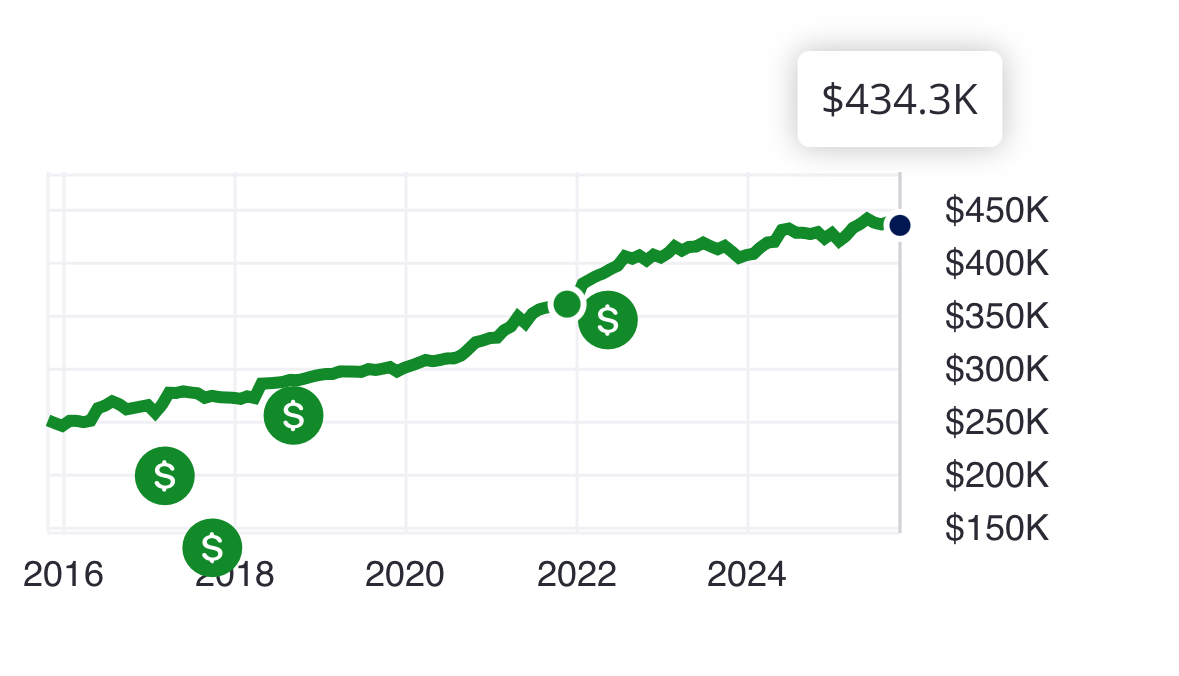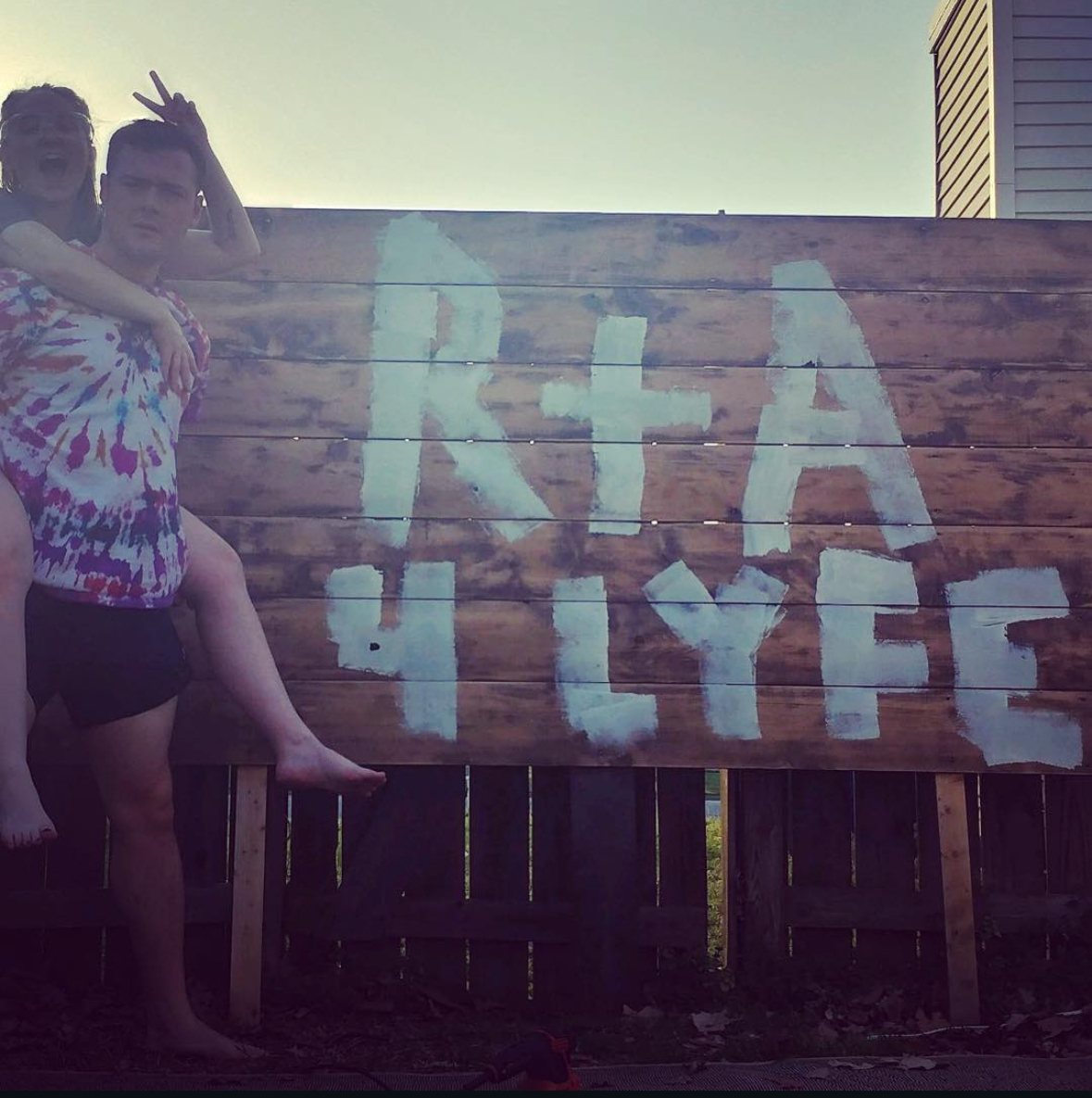
Lately, I’ve seen people online talking about looking up their old homes on Zillow… just to see what they’re worth now or how much equity they’ve built. So, I had to do it too.
Well, I did… and wow.

Let’s go back to 2018. Rustin and I were closing on our very first home. We had no idea what we were getting into. We weren’t prepared for the $7,000 plumbing repair that showed up within the first 60 days or how hard it would be to learn everything about homeownership as we went. It was scary, overwhelming at times, but we figured it out one step at a time.
And looking back now, I’m so grateful we did. That home, the one that tested us early on, became the starting point for everything that came next. It allowed us to build equity, eventually sell, and make our way back home to the Shenandoah Valley.
When I pulled up that house (and another we’ve owned) on Zillow recently, the numbers stopped me in my tracks. The values had climbed higher than I could have imagined back then. Those charts tell a powerful story of growth… but also one of challenge.
Prices have skyrocketed in a way that doesn’t feel sustainable. For those of us who bought years ago, that appreciation has been a gift. But for someone trying to buy their first home today, it’s a mountain.
After attending the housing summit last week, I couldn’t stop thinking about that gap, the growing divide between those who already own and those who are trying to get started. The data shared there was sobering.
The average first-time homebuyer is now 38 years old. Just ten years ago, it was 28. The average homeowner doesn’t sell and move up to their next home until age 61. A decade ago, that number was closer to 36. That means buyers are getting in later, staying longer, and losing years of potential equity-building in between.
It’s no wonder affordability feels out of reach for so many.
Yes, higher home prices and limited inventory are part of the problem. But even more than that, incomes simply haven’t kept pace. Wages have grown slowly while the cost of living, building materials, and interest rates have all climbed. The result? A market where people feel stretched thin just to compete, and that’s not sustainable.
At the same time, waiting for the market to “crash” or prices to fall might not be the solution either. Experts predict that home values will still grow around 2.5–3% per year over the next few years. That’s steady, healthy appreciation… but it also means waiting for a big price drop probably isn’t realistic.
And those 3% mortgage rates that everyone hopes will return? I get it... they were amazing while they lasted. But that period of historically low rates is actually part of what created the affordability issue we’re seeing now. Fewer homeowners want to give up those low rates, which keeps inventory tight and drives up prices for what’s available.
So yes… buying a home right now is hard. Harder than it’s been in a long time. But not impossible.
What I’ve learned, both personally and professionally, is that homeownership isn’t about waiting for perfect conditions. It’s about building something, even when it’s uncomfortable. It’s about planting roots, creating stability, and growing over time.
I’ll be honest, it’s not for the faint of heart right now. But that first step, even if it’s smaller than you imagined, can still open the door to long-term opportunity. The gap between homeowners and renters isn’t just about having a house; it’s about financial security. National data shows that the average homeowner’s net worth is more than forty times that of a renter. That’s the difference equity makes.
When I think back to our first home in 2018, I don’t just see the repair bills or the nerves… I see the decision that changed everything. It wasn’t easy, and it wasn’t perfect, but it was worth it.

Homeownership today looks different than it did a decade ago, but it still holds the same purpose. It’s about taking that leap, even when the timing isn’t ideal, and finding a way forward in a market that feels tougher than ever. Because at the end of the day, owning a home isn’t just about value charts or equity lines… it’s about creating something that grows with you, challenges you, and ultimately rewards you in ways that go far beyond numbers.
If you’re feeling unsure about where to start in this market, I’d be happy to share what I’m seeing here in the Shenandoah Valley and help you create a plan that fits your goals, even in today’s challenging climate.
- What Really Matters When Choosing a Real Estate Agent in the Shenandoah Valley
- Where Vision Meets Small-Town Magic in New Market
- Life Among the Trees: Why Living Near Bryce Resort Feels Like a Permanent Vacation
- The “Wow” Factor of a Home: What You See vs. What You Need to Know
- The Nostalgia of New Market, Virginia